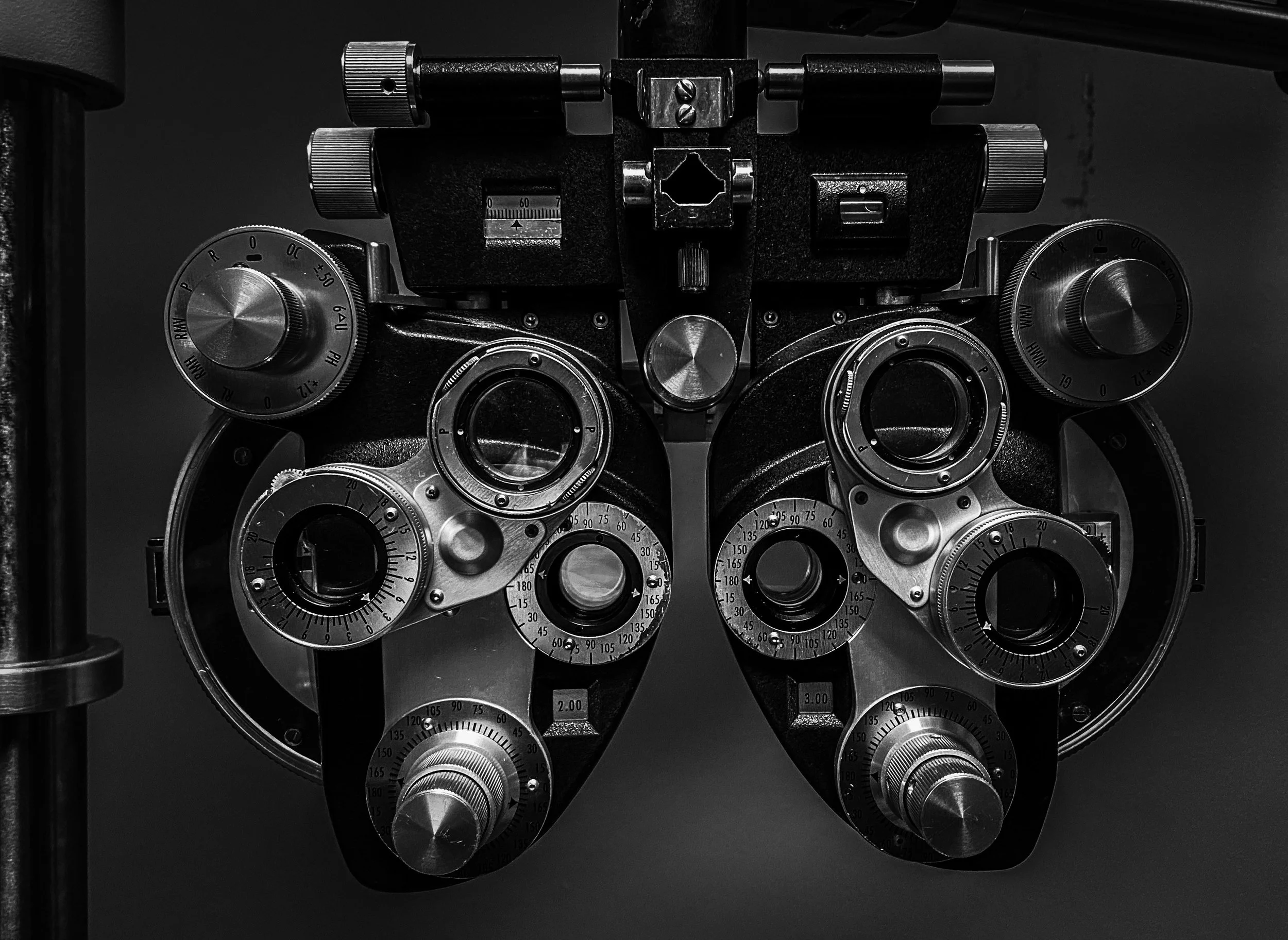
FAQs
Eye Examinations
How often should I have an eye examination?
For most adults with healthy eyes, we recommend a comprehensive eye exam every 1-2 years. However, if you wear contacts or glasses, have a family history of eye disease, have diabetes, or are over 60, annual exams are recommended. Children should have their first eye exam at 6 months, again at age 3, before starting school, and then every 1-2 years thereafter.
What's included in a comprehensive eye examination?
Our comprehensive eye exams go beyond just checking your vision. We assess your eye health, screen for diseases like glaucoma and cataracts, evaluate your prescription, check eye alignment and movement, measure eye pressure, and examine the internal and external structures of your eyes. We also utilize advanced technology like Optos retinal imaging and OCT scans when appropriate.
How long does an eye exam take?
A comprehensive eye examination typically takes 30-45 minutes. If additional testing is needed, such as contact lens fittings or specialized imaging, please allow extra time. We believe in thorough care and never rush through appointments.
Advanced Imaging Technology
What is Optos retinal imaging?
Optos is an ultra-widefield retinal imaging technology that captures over 80% of your retina in a single image. Unlike traditional methods that require dilation and only capture 15% of the retina, Optos provides a comprehensive view quickly and comfortably. This helps us detect early signs of eye diseases, diabetes, high blood pressure, and even certain cancers. The scan takes less than a second per eye and is completely painless.
What is OCT and why might I need it?
OCT (Optical Coherence Tomography) is a non-invasive imaging test that uses light waves to take cross-sectional pictures of your retina. Think of it as an "MRI for your eyes." OCT allows us to see the distinct layers of the retina and measure their thickness, which is crucial for diagnosing and managing conditions like macular degeneration, diabetic retinopathy, glaucoma, and macular holes. It provides detailed information that can't be seen during a regular eye exam.
Are these imaging tests covered by insurance?
Coverage varies by insurance plan. Many medical insurance plans cover OCT when medically necessary for diagnosing or monitoring specific conditions. Optos imaging may be covered under some plans or available as an out-of-pocket option. We'll discuss your coverage and the value of these technologies during your visit.
Contact Lenses
What's involved in a contact lens fitting?
A contact lens fitting goes beyond a standard eye exam. We measure the curvature of your cornea, assess your tear film quality, evaluate your eyelid structure, and determine the best lens type for your lifestyle and eye health. You'll try on lenses in our office to ensure proper fit and comfort. We'll teach you insertion, removal, and care techniques, and schedule follow-up appointments to ensure the lenses are performing well.
What are RGP contact lenses?
RGP stands for Rigid Gas Permeable. These are hard contact lenses made from durable plastic that allows oxygen to pass through to your cornea. RGPs provide sharper vision than soft lenses for many people, especially those with astigmatism or irregular corneas. They're also excellent for conditions like keratoconus. While they have a longer adaptation period than soft lenses, many patients prefer them for their crisp vision, durability, and healthier oxygen transmission.
What are scleral contact lenses?
Scleral lenses are large-diameter gas permeable lenses that vault over the entire cornea and rest on the white part of the eye (the sclera). They create a fluid-filled space over the cornea, making them incredibly comfortable and ideal for people with irregular corneas, severe dry eye, keratoconus, post-surgical eyes, or high prescriptions. Many patients who couldn't wear traditional contacts successfully find scleral lenses life-changing.
Who is a good candidate for scleral lenses?
Scleral lenses are excellent for patients with keratoconus, pellucid marginal degeneration, post-LASIK complications, severe dry eye syndrome, corneal scarring or irregularities, Stevens-Johnson syndrome, or those who have been unsuccessful with other contact lens types. They're also great for people seeking the most stable, comfortable vision possible.
Can I purchase contact lenses without a current prescription?
No, by law, contact lenses require a valid prescription that's typically valid for one year. Contact lenses are medical devices that must be properly fitted and monitored to ensure eye health. Even if your vision hasn't changed, regular exams ensure your lenses still fit properly and your eyes remain healthy.
Dry Eye
What causes dry eye?
Dry eye can result from inadequate tear production, poor tear quality, or excessive tear evaporation. Common causes include aging, hormonal changes (especially in women), medications (antihistamines, blood pressure medications), environmental factors (wind, dry air, screen time), medical conditions (autoimmune diseases, diabetes), and meibomian gland dysfunction where oil glands in the eyelids become blocked.
What are the symptoms of dry eye?
Symptoms include stinging or burning sensations, scratchy or gritty feeling, redness, watery eyes (yes, watery eyes can indicate dry eye!), blurred vision that improves with blinking, difficulty wearing contact lenses, eye fatigue, and sensitivity to light. Some people describe it as feeling like something is in their eye.
How do you treat dry eye?
Treatment depends on the cause and severity. Options include artificial tears, prescription eye drops that increase tear production, warm compresses and lid hygiene, omega-3 supplements, punctal plugs to retain tears, treating underlying lid inflammation, and lifestyle modifications like taking screen breaks and using a humidifier. We create customized treatment plans based on your specific condition.
Can dry eye be cured?
While many cases of dry eye are chronic and require ongoing management, symptoms can be significantly improved or even eliminated with proper treatment. Some causes, like medication side effects or environmental factors, can be addressed directly. We focus on finding the most effective management strategy to keep you comfortable and protect your eye health.
Still Have Questions?
We're here to help! Contact Murrieta Optometry to schedule your appointment or speak with our knowledgeable staff.